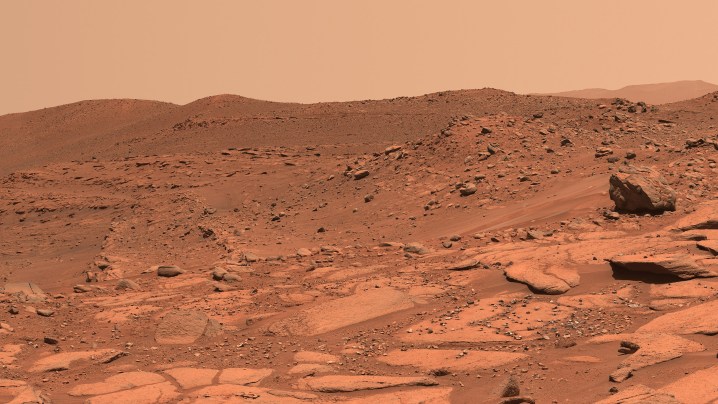The Jezero crater on Mars, where NASA’s Perseverance is currently exploring, is vast at nearly 30 miles across and was likely created by a huge asteroid impact. But there wasn’t just one asteroid impact — it’s thought that several asteroids hit the area over millions of years, creating a succession of craters that overlap and fit within each other.

Within the Jezero crater is another, much smaller crater called the Belva Crater. This one is less an one mile across, but it is still useful to study because within it, you can see the different layers of rock that were formed throughout Mars’ history. The Perseverance rover recently used its Mastcam-Z instrument to collect over 150 images of the Belva Crater, which have now been stitched together into a mosaic. You can see a small section of the mosaic above, or the full panoramic image below.

To view all of the details in the huge final mosaic image, you can head over to NASA’s Jet Propulsion Laboratory website, which hosts a high-resolution version of the image. There’s also a 3D version of the image if you have red-blue 3D glasses on hand.
Geologists can look at each layer for clues to Mars’ past, such as when there was water present on the planet’s surface. “Mars rover missions usually end up exploring bedrock in small, flat exposures in the immediate workspace of the rover,” explained Perseverance scientist Katie Stack Morgan in a statement. “That’s why our science team was so keen to image and study Belva. Impact craters can offer grand views and vertical cuts that provide important clues to the origin of these rocks with a perspective and at a scale that we don’t usually experience.”
The 3D version of the mosaic, called an anaglyph, is more than just a fun curiosity. When trying to look at a complex structure like a crater in an image, using 3D can help scientists to see the different features that they might want to pay attention to. Within this mosaic, they found layers of sedimentary rock that sloped down at an angle, which could have been a sandbar created by a river flowing through the region.
“An anaglyph can help us visualize the geologic relationships between the crater wall outcrops,” said Stack. “But it also provides an opportunity to simply enjoy an awesome view. When I look at this mosaic through red-blue 3D glasses, I’m transported to the western rim of Belva, and I wonder what future astronauts would be thinking if they were to stand where Perseverance once stood when it took this shot.”



